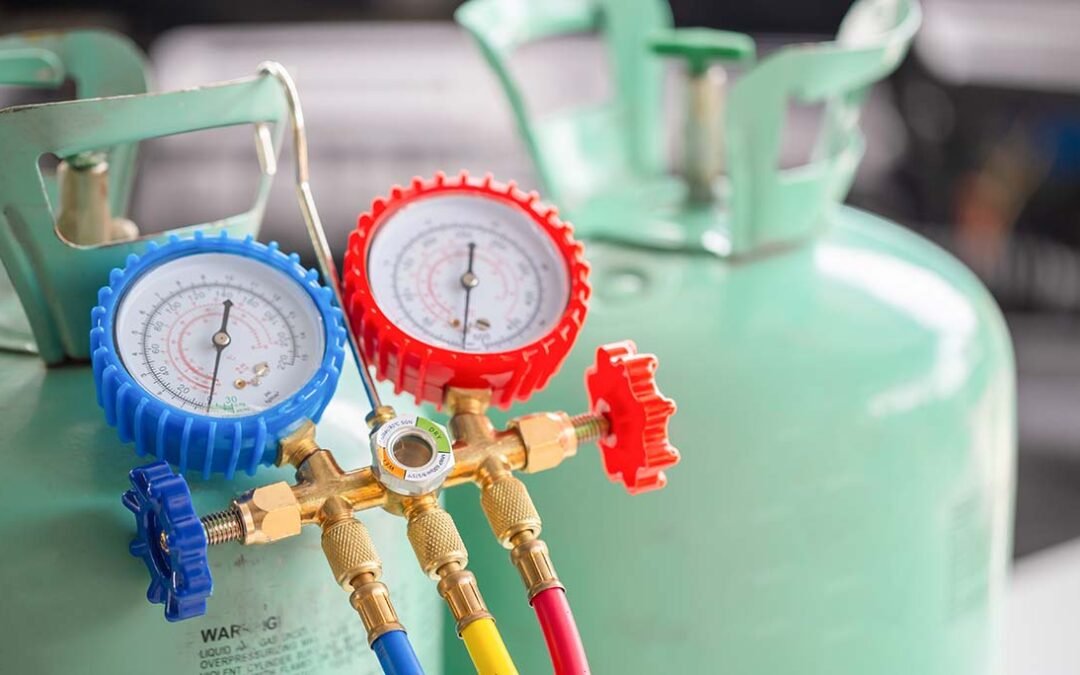As the summer heat intensifies, your air conditioner becomes your home’s primary defense against high temperatures. But what happens when that comfort begins to falter? If your home feels warmer than usual or your energy bills are creeping upward, your system might be low on refrigerant—a critical substance in the cooling process.
Running your air conditioner with insufficient refrigerant isn’t just inefficient—it can actually cause serious damage to your HVAC system. Left unchecked, it can lead to system breakdowns, expensive repairs, or even the need for full replacement. Understanding the signs of low refrigerant is essential for early detection and proactive maintenance.
Below, we’ll break down what refrigerant is, why it matters, and the five most common signs that your AC system might be running low.
What Is Refrigerant and Why Is It So Important?
Refrigerant is the chemical compound that allows your air conditioning system to transfer heat. It cycles through your HVAC system in a continuous loop, absorbing heat from inside your home and releasing it outside. This cycle—moving between liquid and gas forms—is what enables your air conditioner to cool the air efficiently.
Here’s a simplified look at how it works:
- Evaporation (Indoor Coil): Refrigerant enters the indoor evaporator coil as a liquid. As warm indoor air passes over the coil, the refrigerant absorbs the heat and evaporates into a gas.
- Compression (Compressor): The refrigerant gas travels to the outdoor unit, where the compressor increases its pressure and temperature.
- Condensation (Outdoor Coil): The hot gas flows through the outdoor condenser coil and releases the absorbed heat into the outside air. As it cools, the refrigerant turns back into a liquid.
- Expansion: The liquid refrigerant cycles back to the indoor unit, and the process repeats.
Over the years, environmentally harmful refrigerants like CFCs and HCFCs have been phased out, with HFCs and newer low-global-warming-potential refrigerants like R-32 and R-454B becoming the standard. But no matter the type, refrigerant is essential to your system’s performance.
When refrigerant levels drop—usually due to a leak—the entire cooling process is disrupted. This not only makes your home uncomfortable but also forces your system to work harder, increasing energy consumption and wear and tear.
5 Signs Your Air Conditioner May Be Low on Refrigerant
1. Weak or Warm Airflow
If the air coming from your vents feels warmer than usual—or the airflow is weaker—your system may not have enough refrigerant to absorb and remove heat from the indoor air. Low refrigerant levels can cause the evaporator coil to freeze, blocking airflow even further.
In a properly functioning system, cool air should flow steadily and comfortably. But with low refrigerant, the system struggles to maintain temperature. You may notice:
- Lukewarm air from vents, even when the thermostat is set low
- Rooms taking longer to cool
- Constant running without achieving your desired temperature
2. Ice or Frost Buildup on the Refrigerant Line or Evaporator Coil
One of the more visual signs of low refrigerant is ice forming on the indoor evaporator coil or the refrigerant line. This happens because insufficient refrigerant reduces pressure in the evaporator coil, causing the remaining refrigerant to expand too rapidly and lower the coil’s temperature below freezing.
This freezing can block airflow and worsen the cooling problem. Eventually, as the system shuts down or temperatures rise, the ice melts—and you may notice:
- Dripping or pooling water around the indoor unit
- Frost on the copper refrigerant lines
- Decreased system performance
3. Short Cycling
Short cycling occurs when your AC turns on and off in quick bursts rather than completing full cooling cycles. This pattern can be caused by overheating components—especially the compressor—which may happen if your system is low on refrigerant.
As the compressor attempts to compensate for the lack of cooling, it works harder and shuts off prematurely to protect itself. The result:
- Higher energy bills
- Increased stress on system components
- Inconsistent indoor temperatures
- Less effective humidity control
4. Unusual Noises (Hissing or Bubbling)
Refrigerant leaks often make themselves known through strange sounds. If you hear hissing or bubbling noises coming from your indoor or outdoor unit, it’s possible that refrigerant is escaping from a compromised line or coil.
- Hissing usually indicates refrigerant leaking as a gas.
- Bubbling may suggest refrigerant escaping in its liquid form.
5. Lack of Regular Maintenance
One of the most common reasons homeowners discover refrigerant issues too late is because they haven’t had their system inspected regularly. Preventative maintenance is key to catching small problems—like refrigerant leaks—before they lead to bigger, more expensive issues.
Why Prompt Action Matters
If your air conditioner is low on refrigerant, continuing to run it can cause extensive and irreversible damage to vital components—especially the compressor. The longer the system operates inefficiently, the more likely you’ll face serious repair costs or a full system replacement down the line.
Stay Cool and Comfortable All Summer Long
Your comfort and safety depend on an AC system that’s fully charged, well-maintained, and properly functioning. Don’t let low refrigerant keep your home from staying cool when it matters most. By staying alert to the signs and scheduling regular inspections, you can avoid unnecessary repairs, reduce energy costs, and keep your air conditioner running smoothly all summer long.
Contact Palmetto Heating & Air today and let us help you stay cool this summer in Southeastern South Carolina & Northeastern Georgia.



Recent Comments